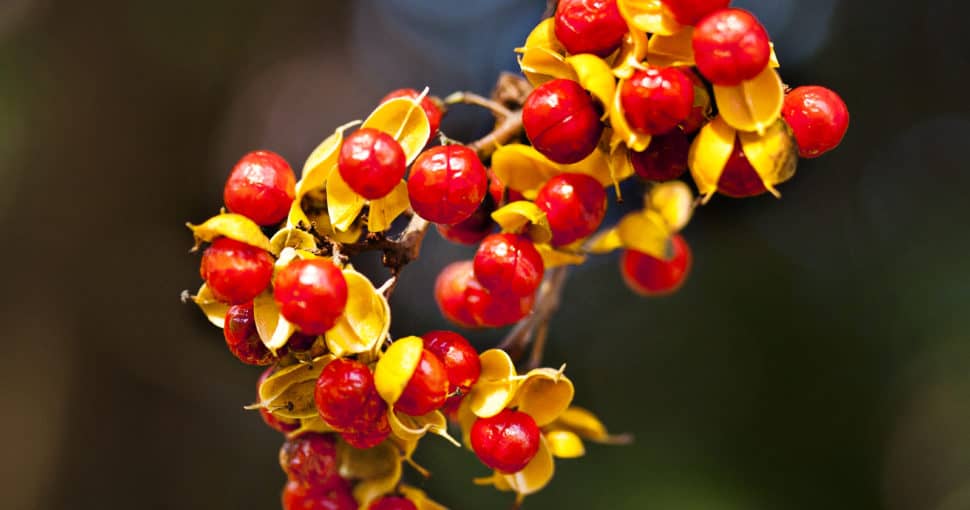As spring has begun and summer nears, many people in Utah will look forward to hiking and camping outdoors. Those activities are great with friends, family, or even pets. However, it’s important to take the necessary precautions when entering a space filled with flora, and one measure is to know which plants are poisonous.
Contents
- 1. Myrtle Spurge (Euphorbia Myrsinites)
- 2. Poison Ivy (Toxicodendron Radicans)
- 3. Poison Oak (Toxicodendron Diversilobum)
- 4. Stinging Nettle (Urtica Dioica)
- 5. Virginia Creeper (Parthenocissus Quinquefolia)
- 6. Philodendron (Philodendron)
- 7. Jimsonweed/Devil’s Weed (Datura Stramonium)
- 8. Foxgloves (Digitalis)
- 9. Baneberry (Actaea Rubra)
- 10. Water Hemlock (Cicuta)
- 11. Bittersweet/Woody Nightshade (Solanum Dulcamara)
- 12. Calla Lily (Zantedeschia Aethiopica)
- 13. Cotoneaster (Cotoneaster)
- 14. Daffodil (Narcissus)
- 15. Death Camas (Toxicoscordion Venenosum)
- 16. Dumb Canes (Dieffenbachia)
- 17. False Hellebores (Veratrum)
- 18. Irises (Iris)
- 19. Lupine (Lupinus)
- 20. Oregon Grape (Mahonia Aquifolium)
- 21. Pacific Yew (Taxus Brevifolia)
Utah is home to several different types of poisonous plants, some of which may have migrated from different parts of the world. Nevertheless, some of these plants may look attractive and harmless, but they could cause severe symptoms if you touch or consume them, and those symptoms may even lead to death in some extreme cases.
It is, therefore, vital to have some understanding of these different poisonous plants so that you can stay away from them and make sure your pets or children don’t accidentally touch or eat them either. Sometimes these plants can also be mistaken for others, leading to accidental consumption. Thus, this article discusses 21 poisonous plants in Utah, offering you details about the appearance, symptoms they may cause, and where you can find them. Knowing your environment can significantly help you traverse the space with more precaution and confidence. So, let’s discuss these plants in detail.
1. Myrtle Spurge (Euphorbia Myrsinites)
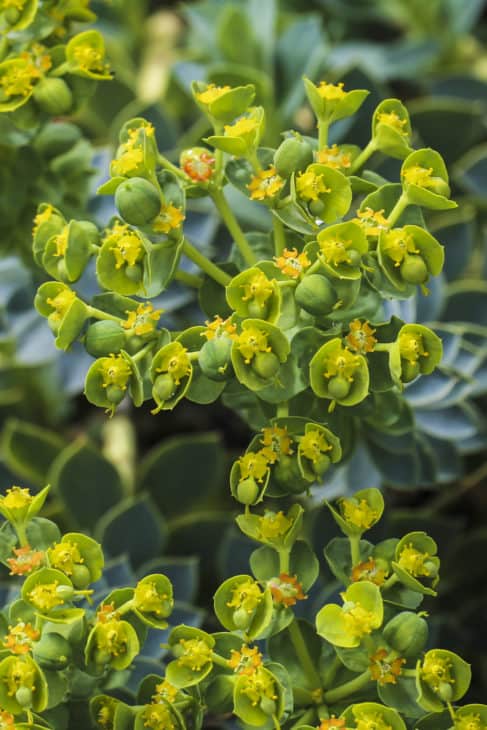
Myrtle spurge is a short, evergreen, succulent perennial plant. Its star-shaped yellow-green flowers are one of its most notable features. It also has blue-green fleshy leaves arranged in a spiral formation. Touching the plant’s milky sap could cause eye and skin irritation. However, every part of the plant is toxic to humans and animals if eaten.
2. Poison Ivy (Toxicodendron Radicans)
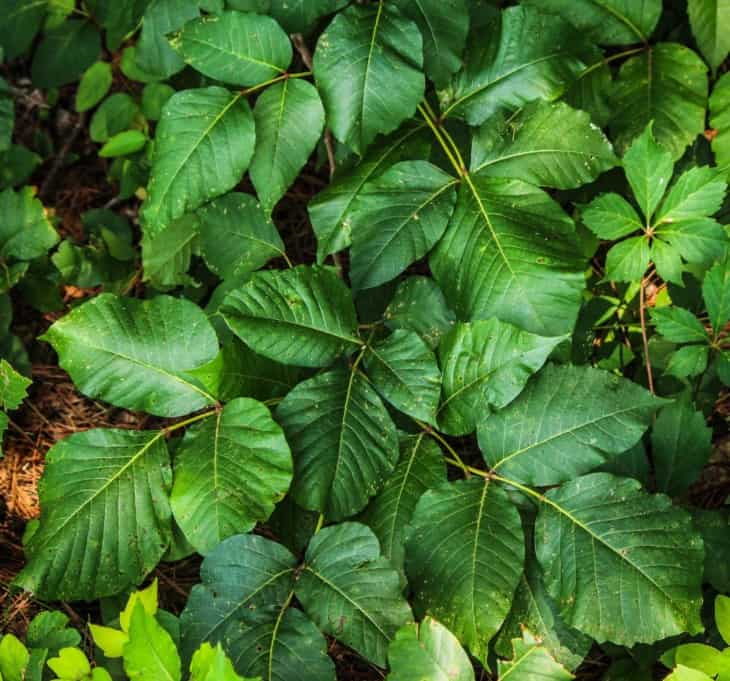
The poison ivy plant is a climbing vine with season-based colors. If you’re going out in the summer, then you should note the leaflets are green, smooth, shiny, and non-lobed. In addition to that, the plant has tiny white berries. Don’t let any part of the plant come into physical contact with you; it may result in severe dermatitis. Burning the plant also releases toxic fumes.
3. Poison Oak (Toxicodendron Diversilobum)
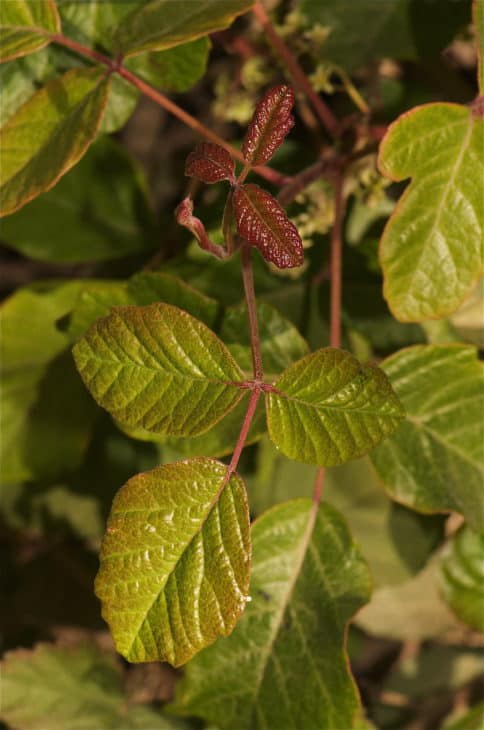
Poison oak is often mistaken for poison ivy because it looks fairly similar. However, the most significant difference is rounder and larger leaves. This plant also has fruits, which are waxy berries of different colors, including green, yellow, or white. Usually, the berries blend with their surroundings well, making them hard to spot. Touching this plant may cause severe dermatitis or an itchy red rash.
4. Stinging Nettle (Urtica Dioica)
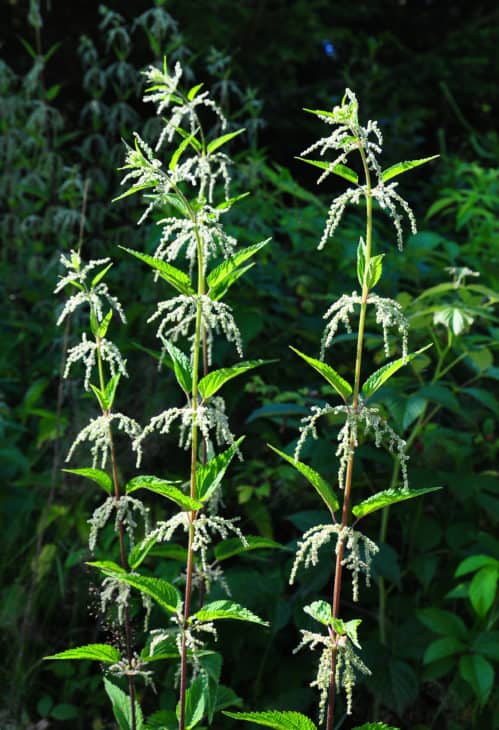
The stinging nettle plant has flowers in clusters with opposite leaves along the stem of the plant. The leaves are oval in shape and have teeth on the edges and pointy ends. In addition to that, it has spiky spines on the stems and leaves, which is its most identifiable feature. These spines can sting a person or animal if touched, leading to poisoning.
5. Virginia Creeper (Parthenocissus Quinquefolia)
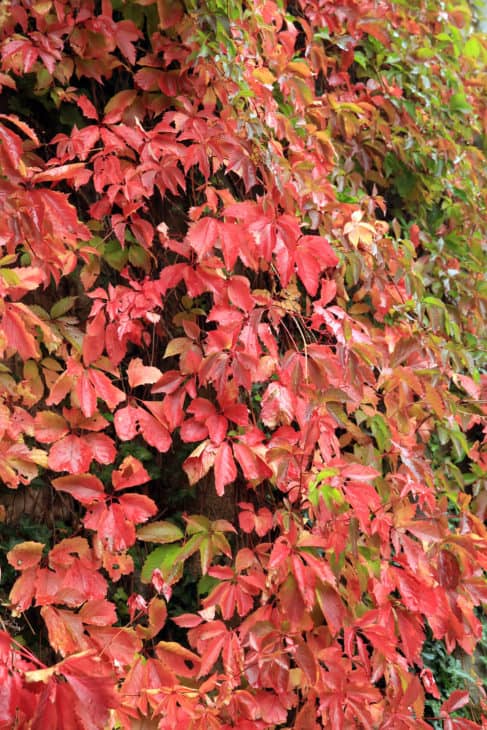
Virginia creeper is a flowering vine that may have blue-black or black berries clustered together on its red stem. Eating the berries can be harmful as they are moderately toxic with high concentrations of oxalic acid. The plant also has an irritating oil that can cause skin irritation to those with sensitive skin if touched. The vine is sometimes grown in residential gardens.
6. Philodendron (Philodendron)
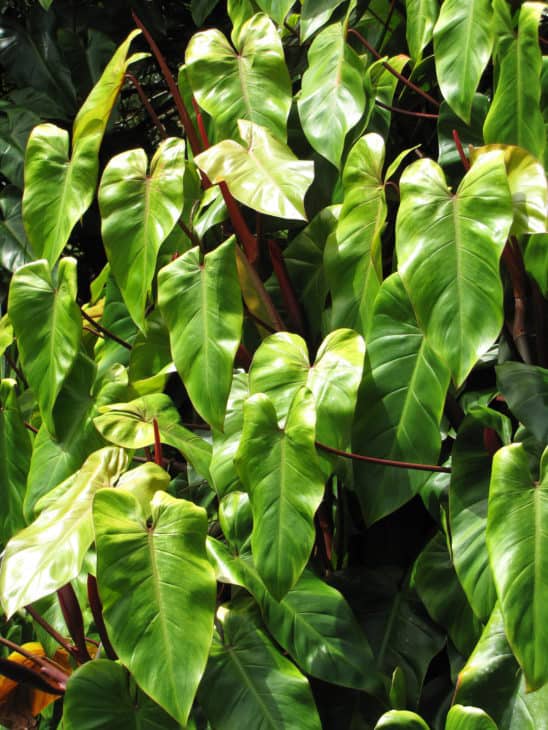
Philodendron is a tall and large flowering perennial plant. At full maturity, the plant reaches a maximum height of about 20 feet and a width of 6 feet. However, different varieties may have varying dimensions. People and animals can be poisoned by eating any part of this plant. While it can be grown in a garden, make sure that children and pets don’t go anywhere near it.
7. Jimsonweed/Devil’s Weed (Datura Stramonium)
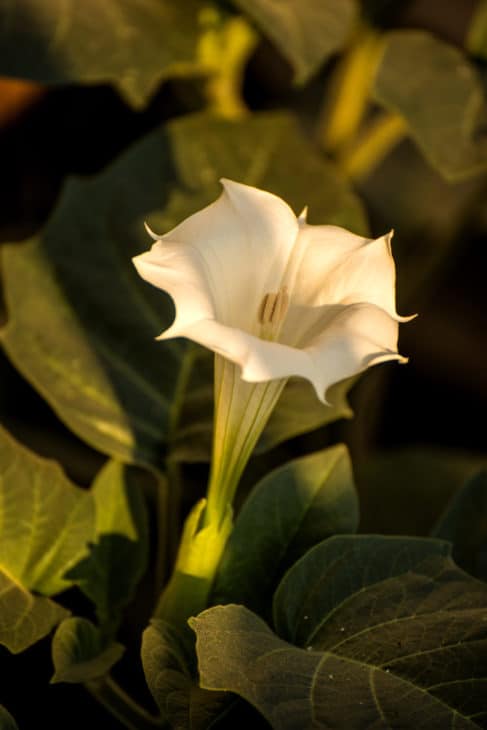
The Datura Stramonium plant goes by many names, and jimsonweed and devil’s weed are two common ones. The plant usually flowers in summer, with white or violet flowers that are shaped like trumpets. Smoking or consuming this plant can result in fatal overdoses. If you ever suspect you have been poisoned by this plant, intravenous physostigmine may be able to work as an antidote.
8. Foxgloves (Digitalis)
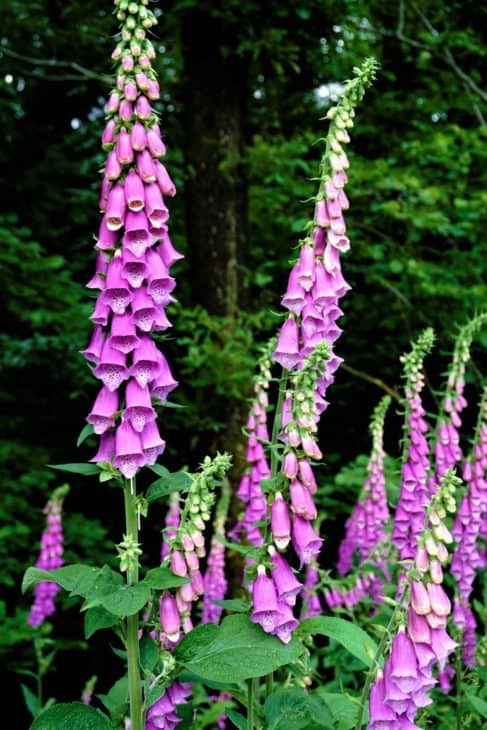
A foxglove plant is a toxic plant to people and animals. Eating any part of it could lead to several symptoms, such as weakness, headaches, nausea, abdominal pain, diarrhea, blurred vision, or rashes. You can identify this plant by its 3-inch long tubular flowers that droop. The flowers’ colors vary (mostly rose, pink, yellow, and white), but they all have spots in each tube.
9. Baneberry (Actaea Rubra)
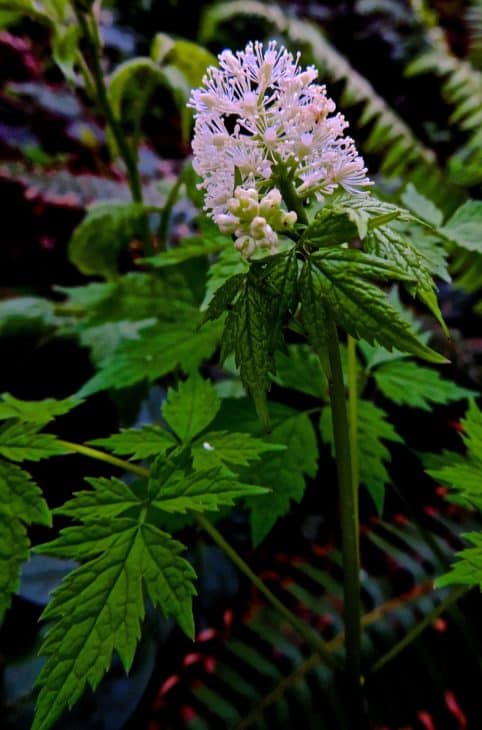
Baneberry is a short fruit-bearing plant. The plant’s brightly colored berries could attract some animals and children, which could lead to consumption. What makes this concerning is that the berries and the roots are the most poisonous part of baneberry. Ingesting the fruit could result in symptoms such as long-lasting stomach cramps, vomiting, delirium, etc. You are likely to encounter baneberry in wetlands.
10. Water Hemlock (Cicuta)
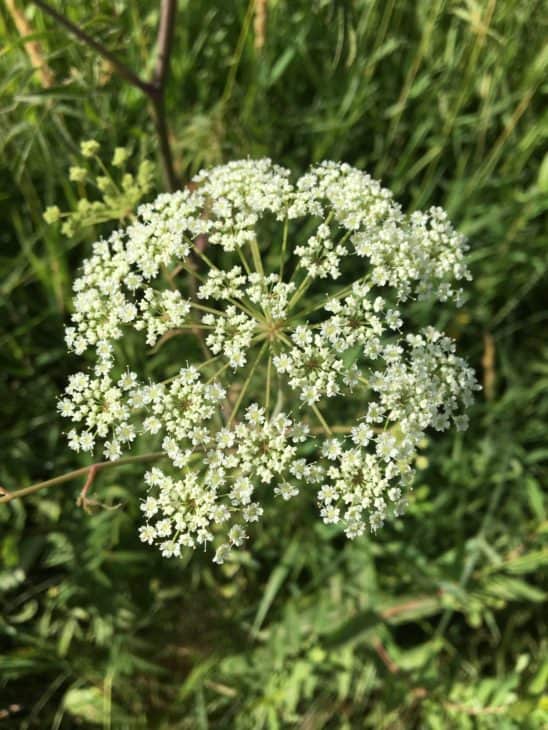
The water hemlock plant is a perennial herb, and its most notable and unique feature is its 6-feet tall, bamboo-like, hollow stems. The stems are either purple or have red stripes on them. Ingesting any part of this plant is highly toxic, but the roots and seeds are the most dangerous. Water hemlocks are commonly found in moist or wet areas.
11. Bittersweet/Woody Nightshade (Solanum Dulcamara)
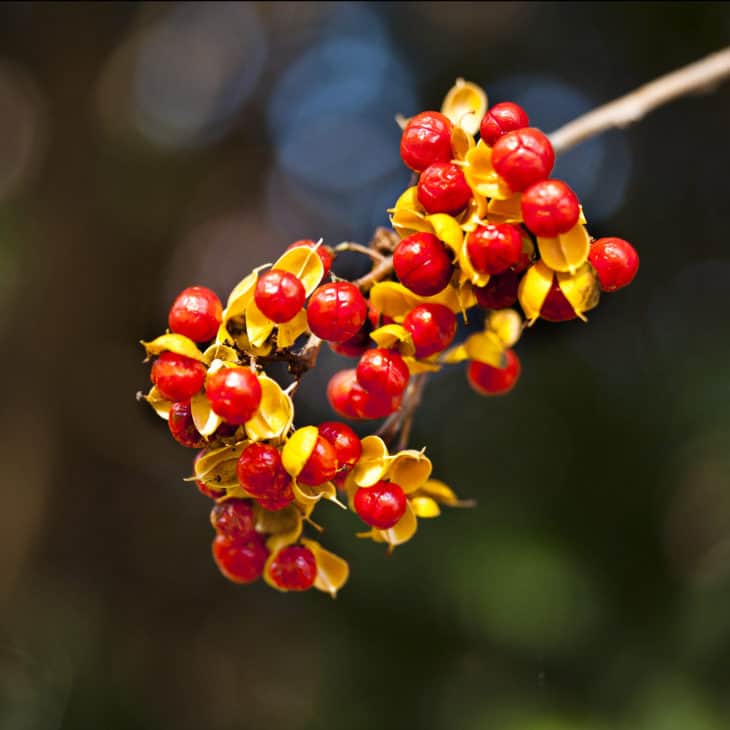
The bittersweet/woody nightshade is an herbaceous vine that reaches about 15 feet in length. It also has violet and yellow flowers shaped like stars. As a flowering plant, it has shiny green berries that turn bright red when ripe. The berries are also the most toxic part of the plant. That said, all parts can be toxic, so don’t try to go near the plant.
12. Calla Lily (Zantedeschia Aethiopica)
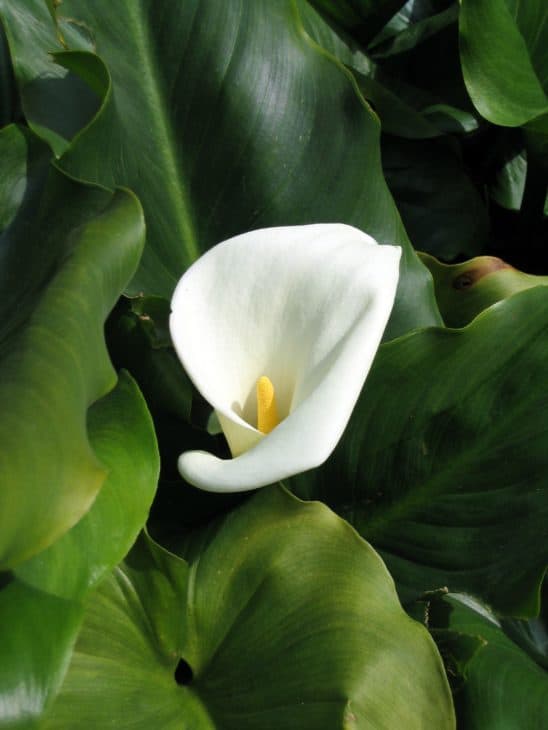
Calla lily is a perennial plant that is about 3 feet tall and 2 feet wide at most. It has large white flowers shaped like trumpets with glossy dark green leaves shaped like arrows. It usually grows in partially shady areas with soil that retains moisture. It may also grow underwater about a foot deep. All parts of the Calla Lily are toxic if ingested.
13. Cotoneaster (Cotoneaster)
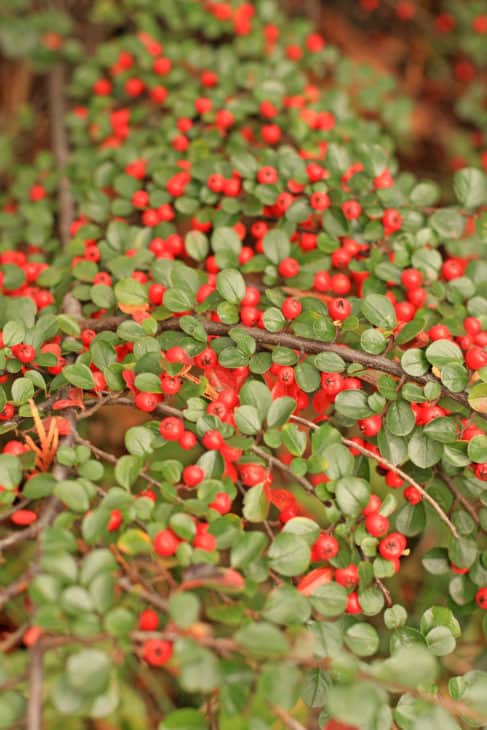
While cotoneaster may be a common garden plant, it is still toxic. This evergreen shrub has long branches that are upright. It also has bright orange berries clustered together. The berries are in such abundance that it’s difficult to spot the branches. Ingesting these berries are toxic if consumed in excess, leading to weakness, trouble breathing, and seizures.
14. Daffodil (Narcissus)
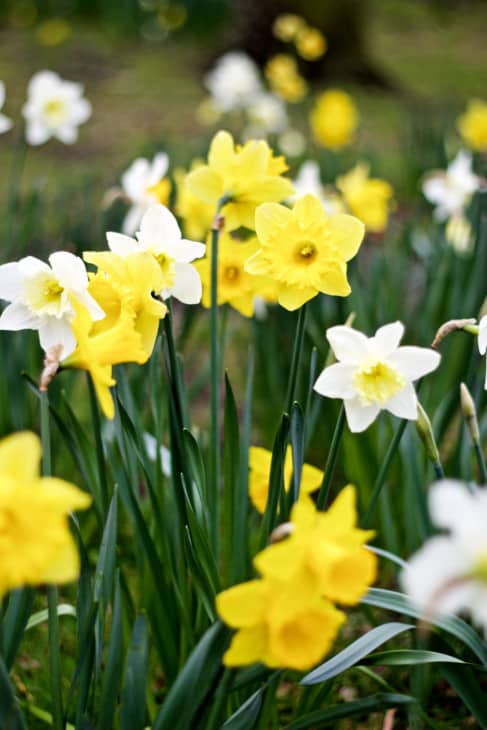
The daffodil is a perennial plant with white or yellow flowers in most varieties, but some may be pink or orange. Each flower has 6 petals and a corona that looks like a trumpet or a cup. The bulbs of the plant are the most toxic part. In the past, they have been mistaken for onions, and those who ate them died.
15. Death Camas (Toxicoscordion Venenosum)
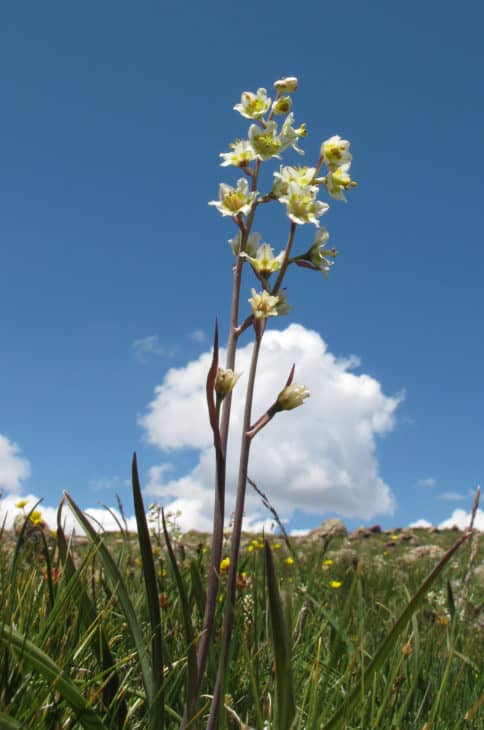
The death camas is an extremely poisonous plant that is sometimes mistaken for wild onions because it looks like grass. That said, you can tell the difference by the creamy white flowers on this plant. It also doesn’t smell like onions. The entire plant is poisonous, causing symptoms such as excessive salivations, mouth-numbing, stomach pain, burning lips, vomiting, diarrhea, confusion, difficulty breathing, coma, and death in some cases.
16. Dumb Canes (Dieffenbachia)
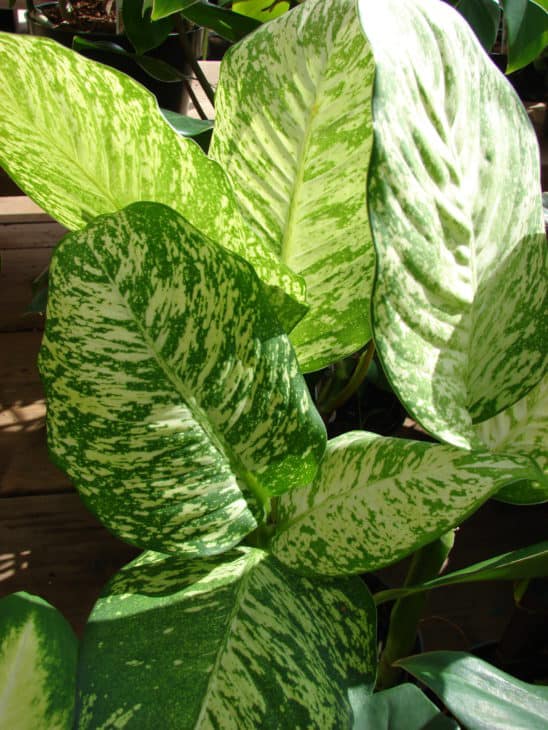
The dumb cane plant is sometimes grown in people’s gardens. They are about 6 feet tall at full maturity, and they have unique bushy and broad leaves. However, if you plan to grow them, then you should note that children and pets, even larger animals like dogs and cats, are at significant risk of poisoning by dumb canes.
17. False Hellebores (Veratrum)
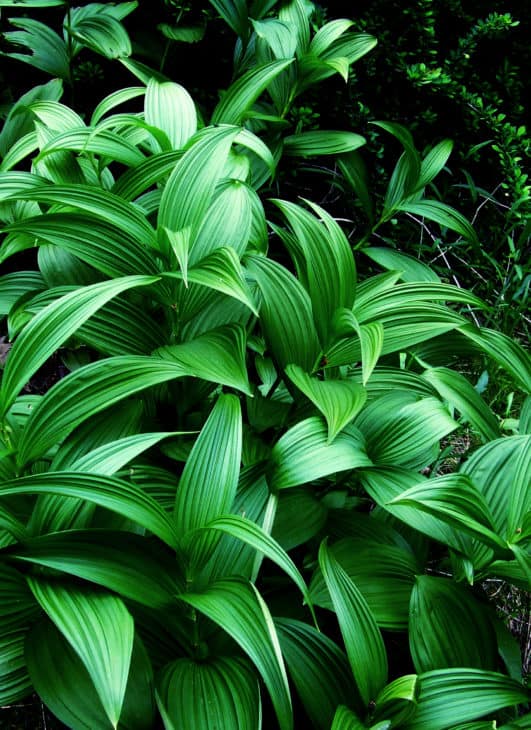
False hellebore is one of the many names of the Veratrum plant. A few others include Indian hellebore, corn lily, and Indian poke. The plant is considered a pest plant for farmers and is highly poisonous. The entire plant is about a little under 7 feet tall with a heavy green stem. It has small flowers, and like the rest of the plant, they can even lead to death if ingested.
18. Irises (Iris)
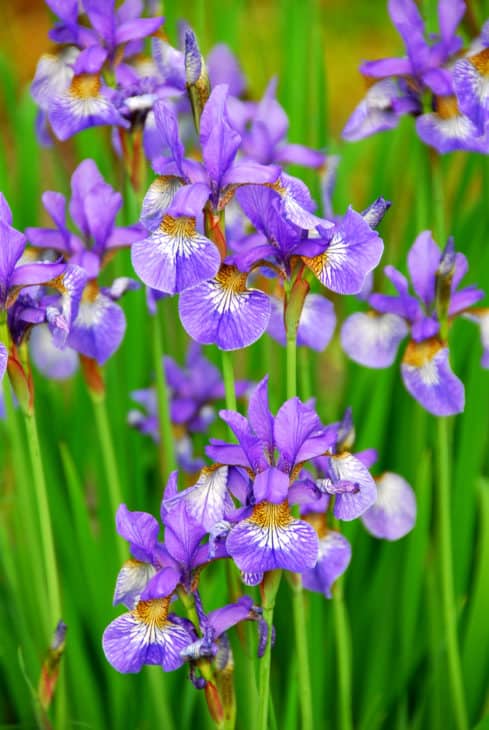
Irises are flowering plants with beautiful showy flowers. The plant is named after the Greek goddess of the rainbow because of the colorful flowers. The clusters of flowers are shaped like fans with symmetrical flowers with six lobes. The plant also has rhizomes that are toxic. Some symptoms include vomiting, nausea, diarrhea, skin irritation, etc., if it is ingested.
19. Lupine (Lupinus)
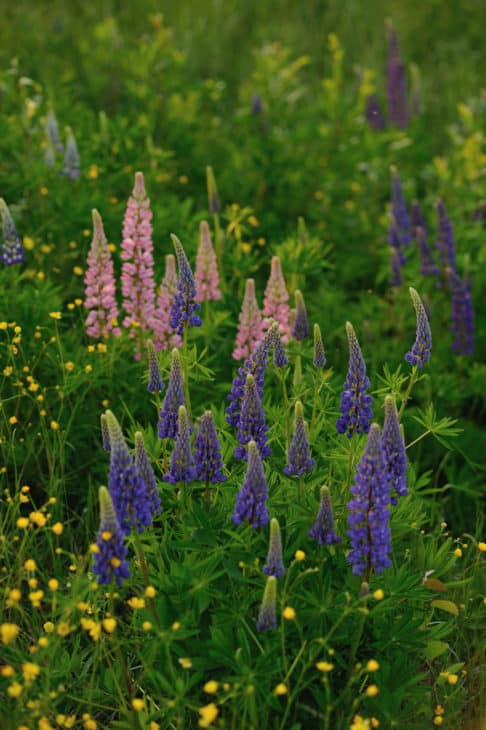
The flowering plant, lupine, is toxic to people and animals. As every part is toxic, pregnant women who consume lupine may have children with congenital disabilities. Typically, the toxins of this plant are transmitted by the milk of livestock that has consumed this plant. The plant’s toxins can also kill livestock if they eat a lot of it.
20. Oregon Grape (Mahonia Aquifolium)
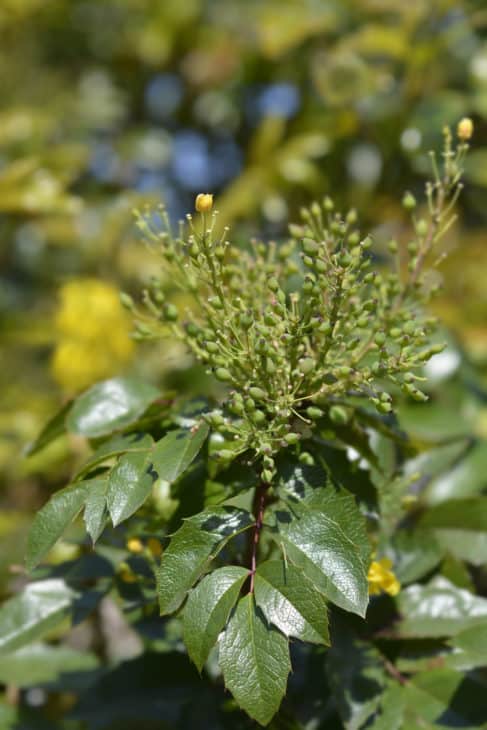
Oregon grape is a flowering evergreen shrub that reaches a maximum height of 10 feet and a width of 5 feet. It has pinnate leaves with spine-like leaflets. The plant’s flowers are yellow and arranged in clusters. It also has blue-black berries. The berries can be toxic for lactating animals and pregnant women. Touching it may also lead to skin problems.
21. Pacific Yew (Taxus Brevifolia)
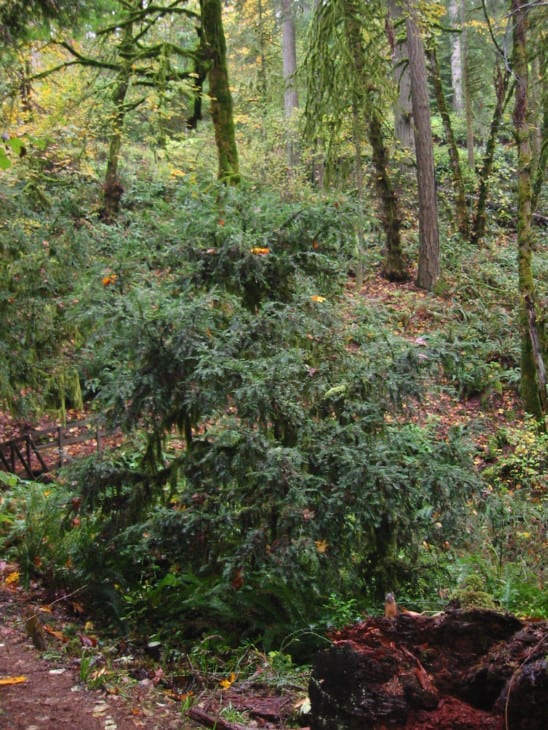
The pacific yew is a shrub or small tree, reaching a height of about 49 feet. That said, the shrub can grow taller, even reaching heights of 66 feet. The bark is thin and scaly, with red color when young and purple-brown color when mature. The entire plant is poisonous and fatal in many cases, but the flesh around the seed may be safe to consume. However, it’s best not to take any chances.

